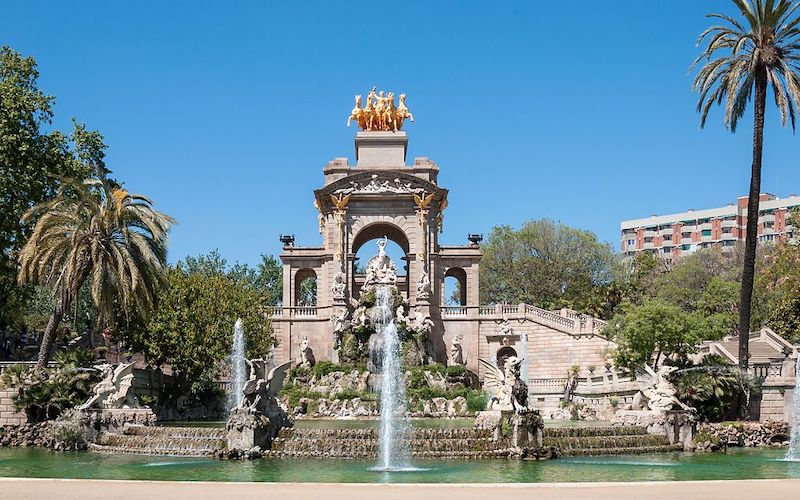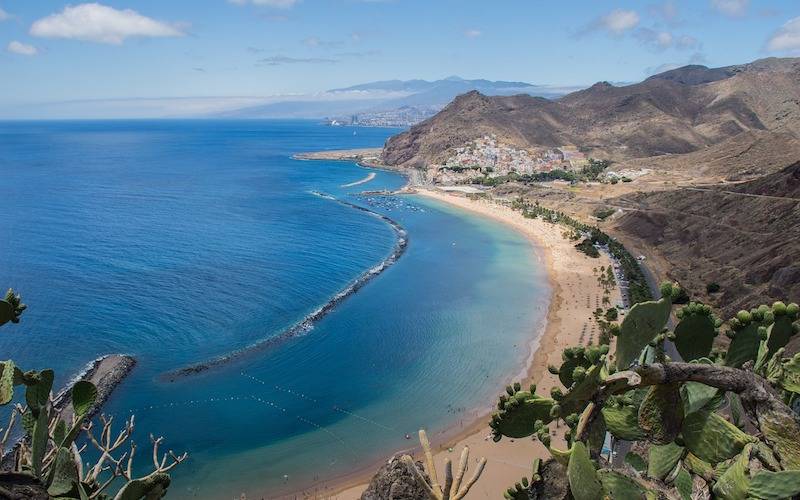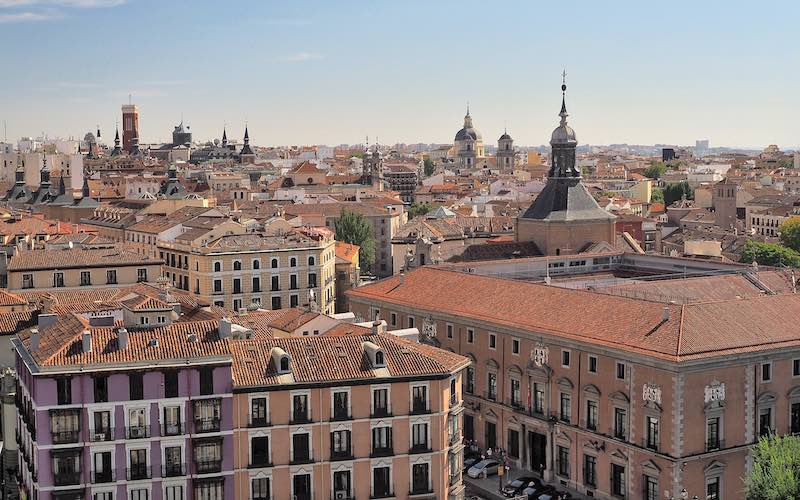Backpacking Spain is a fantastic experience. Spain is full of amazing food, castles, churches and beaches. Whatever you are looking for in a backpacking journey, Spain can provide it! It is also a safe and easy place to travel with the main cities connected well by train. Today’s blog brings to you the best tips for travelling in Spain.
When is the best time to visit?
First of all, when is the best time to go backpacking in Spain? My main tip is to certainly avoid August when it can be extremely busy and very hot. Here are the best times of year to visit the different regions of Spain:
Northern Region (Bilbao and San Sebastian):
The best time to visit is around April-June/September. Visit in late spring, early summer or early autumn if possible. There is still an enjoyable climate and you’ll be able to swim at near empty beaches (although the water temperature is still cold). The maximum temperature rarely exceeds 26 degrees (perfect!). The worst time to visit is between July– August/December. The summer is incredibly hot, and the tourists descend in droves.
Central Spain (Madrid & surroundings):
The centre of the country has the most extreme temperatures, with a cold climate in winter and sometimes stifling heat in summer. Local residents normally leave cities like Madrid in August to look for picturesque beaches or colder climates. Typically, the best time to visit is between October-November. Autumn or Spring is stunning when the leaves and scenery turn to red, orange and brown tones. The climate is also milder. The worst time to visit is July-August. The heat can be severe and make sightseeing problematic and excruciating.
Southern Region (Granada, Sevilla & Cordoba):
If you’d like to experience good weather and a small amount of sun during winter, the ideal choice is to go south to the shores of the Mediterranean Sea. Seville is an amazing city with amazing site seeing and a great deal of nightlife.
The best time to visit Andalucia is between September-November – March-June. During summer the south has overwhelmingly high temperatures. Go throughout spring where it is warm and sunny, but not too warm to point where you have to sit in front of air conditioning all day. The worst time to visit is July-August: Avoid summer in south of Spain as it’s insanely hot.
Money and Budgeting
The currency in Spain is the euro (EUR). On a €50 a day budget you will be able to stay in a dorm and eat well if you mix supermarket shops and cheap tapas. This will leave you a bit of spare money for museums and other tickets.
Accommodation
Accommodation in Spain is normally cheap in comparison to other Western European countries. Dorm beds in hostels typically begin around 15 EUR per night and go as high as 30 EUR in major cities like Barcelona or Madrid.
Food
You can get cheap tapas and sandwiches meals for between 3-10 EUR. If you want wine included, expect to spend about 10-15 EUR per meal. A decent restaurant meal will set you back about 13 EUR. If you go out for paella, drinks, or appetizers, then you should plan to spend around 20 EUR for a meal. Fast food like McDonalds cost around 7 EUR. Groceries should cost around 25-30 EUR a week, particularly if you stick to the numerous local markets around the country.
Activities
Attractions and Museums in Spain cost around 2-14 EURO and diving on the islands will be at least 50 EURO a dive.
Where to go in Spain
When backpacking Spain you are spoilt for choice regarding destinations. The most popular cities in Spain include Barcelona, Seville, Madrid, Cordoba, Grenada and Valencia. If you are looking for beaches the Costa del Sol is fantastic and you might also want to consider the Spanish islands.
Madrid
The capital city is known for its tapas, great nightlife and museums. Here, nothing doesn’t start till midnight. Be sure to see the Prado, one of the biggest museums in the world, and also the Royal Palace. Also plan to spend some time strolling through Plaza Mayor, the main squares.
If you can spare an extra day or two, take a trip to Toledo.
Barcelona
Similar to Madrid, Barcelona is known for its wild partying, historic streets and late-night eating. You’ll find plenty of history, eat dinner at midnight and learn to sleep until 10 pm just like the locals. Don’t miss the phenomenal art nouveau of Barcelona including La Sagrada Familia and the beautiful buildings of Saint Pau.

Seville
Seville is an amazing city with great churches, palaces, and historic sites. They also have good shopping here. The Jewish Quarter here is excellent and the monument dedicated to the different regions of Spain. This is also a big student town. Don’t miss the Royal Alcazar of Seville and Seville Cathedral. I also recommend a walking tour of Santa Cruz. Seville is a rather ‘happening’ city with a lot going on and a great deal of night life.
Cordoba
In Cordoba, the Mezquita de Cordoba is by far the most exquisite example of the Muslim fabric in Spain. Its jasper columns, massive arches, marble floors and the inspiring domed shrine of Byzantine mosaics will take you right back to when Córdoba was under Muslim authority. If you are pushed for time it is possible to spend just one day in Cordoba – many people do it as a day trip to Seville. However, I would recommend at least 2 days in Cordoba (to see Madinat Al Zahra on the morning of the second day) then followed by 2-3 days in Granada.
Grenada
This ancient city is one of the favourites in Spain. You can wander the ancient streets in the centre and relaxing in the old palace, the Alhambra. A trip to southern Spain is not complete without a visit this city.
Valencia
Valencia is a pretty amazing town. Initially, you may not be attracted to Valencia for any reason in particular, but you are likely to enjoy it when you go. You can go for tomato fight in the nearby town of Bunol, which attracts thousands of people each August, most of whom use Valencia as their home base. Valencia is likely to grow on you. It has paella, history, fantastic seafood and a good soccer team. It’s a wonderful city!
The Islands
Whether you go to the Canaries to relax or Ibiza to party, Spain has some of the most gorgeous islands throughout Europe. Due to this, through the months of July and August, they are expensive and full so please try your best to avoid peak season. If you enjoy surfing, beaches, hiking, or cycling then be sure to visit the islands (particularly Gran Canaria). You will not be disappointed! Personally, I really love Tenerife.

Solo Travel and Safety
Spain is a relatively easy place to travel, but learning some Spanish may help you to get by. I like to learn Spanish on the Duolingo app.
Although Spain is quite safe, there can be petty theft in the big cities such as Madrid and Barcelona, so keep your valuables close to you and don’t set your mobile phone on a table or get it out on the Metro if you can help it.
Top Tips for Backpacking in Spain
- Spain is the sunniest country in Europe. Bring your sunglasses and sunscreen no matter what time of year you go.
- The power sockets are type F. Check if you need a power plug adaptor or voltage converter.
- Although Spain has Uber, the locals use an app called Cabify as it’s cheaper (with free bottles of water). You can find a few discounts online for your first ride.
- The original Spanish app Fever is very convenient to find somewhere suitable to go out and with reasonable prices in restaurants, discos and festivals.
- You can book train tickets for Spain online with RENFE.
- Take out a good travel insurance to make sure that you are covered for all eventualities. I have used Staysure because it covers for Covid and pre-existing conditions.
- Carry plenty of tissues and loo roll with you – sometimes the toilets in Spain are not the nicest!
You might also like to read:
- My Tenerife Packing list
- 7 Magnificent Islamic sites in Spain
- Visiting the Alhambra tips
- What is the best Spanish holiday island?

